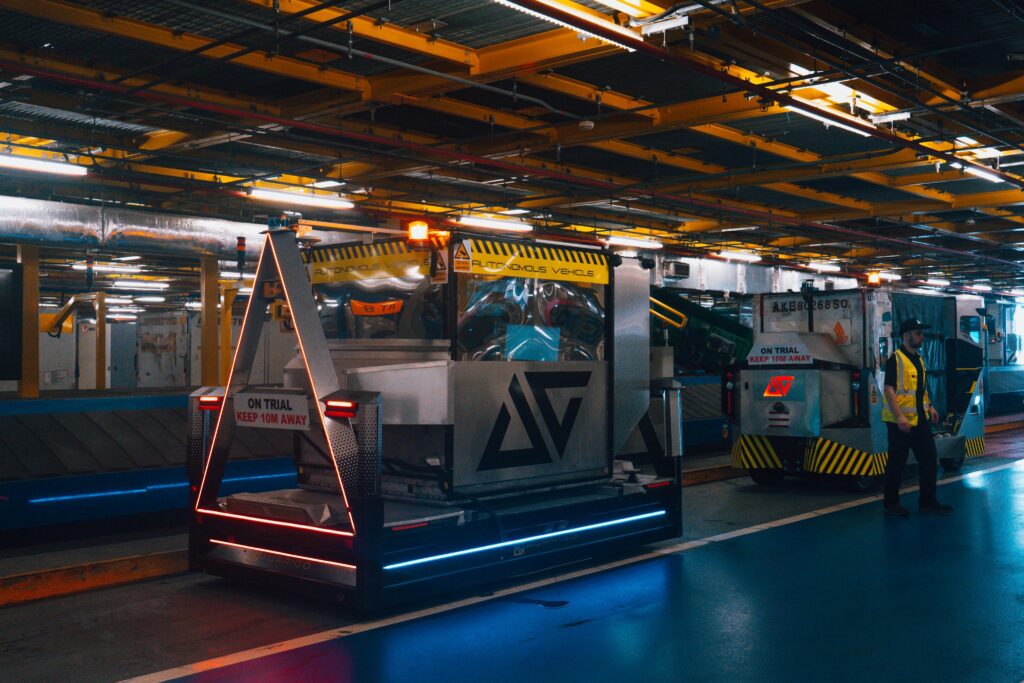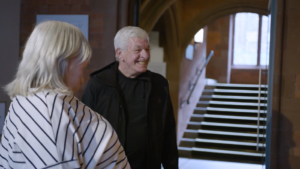Aurrigo International Plc Agrees Electric Autonomous Vehicle Development Partnership with Singapore’s Changi Airport

Aurrigo International plc, a leading international provider of transport technology solutions, has signed a formal partnership agreement with Changi Airport Group (Singapore) Pte Ltd (“CAG”) for the continued joint development and testing of the company’s advanced autonomous, electric baggage vehicles, Auto-Dolly® and Auto-DollyTug®, and its airport simulation software platform Auto-Sim®.
The multi-year partnership with CAG provides an opportunity for the further development of Aurrigo’s autonomous solutions at Changi Airport and demonstrations to showcase the technology to other airports and stakeholders. Airport ground handling faces multiple challenges as the aviation sector recovers post pandemic. These include staff shortages, as many workers worldwide left the industry over the last few years, the need to turn planes around quickly and safely on the ground, as well as the climate change and air quality challenges facing the sector.
After phase one trials, where the Auto-Dolly travelled through the baggage handling area and along the airside roadways, the team has now embarked on phase two of the trial, to test the safe operations of the Auto-Dolly at the aircraft stand. Due to its small footprint and tight turning radius, the Auto-Dolly can manoeuvre itself precisely next to an aircraft and Ground Service Equipment (GSE) items. In addition, with its capability to transfer a Unit Load Device (ULD industry standard luggage container) directly to and from the Skyloader equipment which loads the plane. This means that current processes involving additional equipment can be changed and operational steps can be eliminated, resulting in further savings to manpower and equipment. Changi Airport is the first airport in the world to test this equipment’s ability to perform autonomous loading and unloading of ULDs at the aircraft stand. Video of these operations HERE
Image
This partnership follows on from the agreement with CAG announced on 28 October 2022, for the next phase of development of Aurrigo’s Auto-Dolly. Aurrigo’s Auto-Dolly has been in live, real-world testing at Changi since February 2022. Demonstrating that these electric, autonomous, baggage vehicles eliminate emissions at the point of use, improve the efficiency of baggage handling and allow the deployment of scarce staff resources elsewhere in the airport.
David Keene, CEO of Aurrigo, commented: “We have worked closely with the team at Changi Airport for several years and this partnership cements our collaboration to bring the best automated solutions to airlines and airports, enabling them to improve operational efficiency, cost and safety and sustainability.
“We have been testing the electric and autonomous Auto-Dolly in real airport environments since 2018 and we have used that testing and customer feedback to continuously develop a vehicle that can operate safely and efficiently in the safety critical environment of an airport apron.
“Changi Airport has won countless awards for quality and is famed for implementing pioneering new airport related technology. In CAG we have an excellent partner to develop the technologies and infrastructure that will bring a revolution to aviation ground handling.”
Ms Poh Li San, SVP of Terminal 5 Planning, Changi Airport Group, added: “Similar to major airports throughout the world, recruiting enough ground handling personnel and drivers to support our growth is a challenge. We have been encouraged by Aurrigo’s innovative autonomous technologies to help address these issues, and we’re excited to partner Aurrigo in joint development and testing of these solutions in the real world.”
The development and testing of Aurrigo’s autonomous vehicles is partially funded by the Civil Aviation Authority of Singapore (CAAS) through its Aviation Development Fund (ADF). The ADF supports initiatives to improve productivity in the Singapore aviation sector through the use of innovative solutions.




